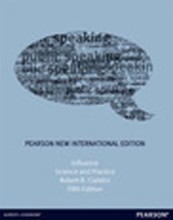Weapons of influence
10 important questions on Weapons of influence
What is the disrupt-then-reframe technique?
How does the principle of liking work?
Door-in-the-face technique (DITF) = rejection then retreat
- Higher grades + faster learning
- Never study anything twice
- 100% sure, 100% understanding
Foot-in-the-door technique (FITD) (Freedman & Fraser)
first asking a target individual to comply with a small request, typically one that is minimally invasive so that the target is almost certain to respond affirmatively. After securing compliance, either the initial requester or an associate of the requester makes a larger, often related request
What is objective consensus?
How does the self-categorisation theory follow?
Explain the Social Identity model for Deindividuation (SIDE)
Deindividuation, phenomenon in which people engage in seemingly impulsive, deviant, and sometimes violent acts in situations in which they believe they cannot be personally identified
What is recognition heuristic?
What kind of heuristic is that the ease at which we can imagine something we use to make a decision, and what is the reason for this?
Explain the concept of contrast principle
The question on the page originate from the summary of the following study material:
- A unique study and practice tool
- Never study anything twice again
- Get the grades you hope for
- 100% sure, 100% understanding































